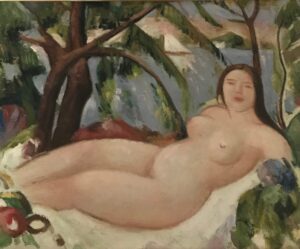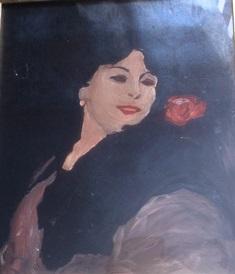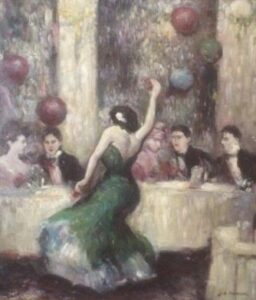The key themes in Fergusson’s work developed over time. A common subject matter in his early paintings is the strong, independent woman, exemplified in portraits of Jean Maconochie and Anne Estelle Rice, who were both partners
In 1898, Fergusson took his first trip to Paris to study at the Louvre. He was highly influenced by the impressionist paintings at the Salle Caillebotte and these were an important influence on his developing style. Later he would also be influenced by Fauvism and the fauvist principles of using colour would become a strong feature of his art. Andre Dunoyer de Segonzac wrote in his foreword to Fergusson’s memorial exhibition of 1961: “His art is a deep and pure expression of his immense love of life. Endowed with a rare plastic feeling, almost sculptural in its quality. He joined with it an exceptional sense of colour, outspoken, ringing colours, rich and splendid in their very substance.”
Fergusson became part of the enormous growth in artistic talent that Paris was home to at the beginning of the twentieth century. There he mingled with artists like Matisse and Picasso in the café society for which the city was renowned. In addition, he and his friend Samuel Peploe regularly painted together at the a seaside resort of Paris Plage and other places along the coast between 1904-9. It was at this period too that he commenced his relationship with the American illustrator Anne Estelle Rice (1879–1959), whom he encouraged to take up painting. She had been sent to Paris to provide drawings for articles on theatre, ballet, opera and race meetings published in the North American magazine and was to figure in many of Ferguson’s canvases
By the outbreak of World War I, Fergusson was considered to be at the forefront of modern British painting. During the war years, however, he achieved little artistically and it was only towards the end of the war that he regained the momentum in his work.
Fergusson was extremely proud of his Scottish and Celtic heritage, which formed the core of his artistic identity. Despite spending many of his most creatively fertile years living and working outside of Scotland, he was a passionate advocate of Scottish art, which he felt should be distinct from English culture.
The key themes in Fergusson’s work developed over time. A common subject matter in his early paintings is the strong, independent woman, exemplified in portraits of Jean Maconochie and Anne Estelle Rice, who were both partners



